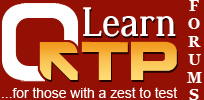The framework depends on the implementation and approach of automation and not the folder structure.
Data Driven Test
Data-driven testing is a methodology used in Test automation where test scripts are executed and verified based on the data values stored in one or more central data sources or databases. These databases can range from datapools, ODBC sources, csv files, Excel files, DAO objects, ADO objects, etc. Data-driven testing is the establishment of several interacting test scripts together with their related data results in a framework used for the methodology. In this framework, variables are used for both input values and output verification values: navigation through the program, reading of the data sources, and logging of test status and information are all coded in the test script. Thus, the logic executed in the script is also dependent on the data values.
Keyword driven test.
The keyword-driven testing methodology divides test creation into two stages: the Planning Stage, and the Implementation Stage.
[1]Planning Stage
Examples of keywords
A simple keyword (one action on one object), e.g. entering a username into a textfield.
Textfield (username)<object> Enter text<Action> Data <username>
[2] implementation stage
The implementation stage differs depending on the tool or framework used. Often, automation engineers implement a framework that provides keywords like “check” and “enter” [1]. Testers or test designers (who don’t have to know how to program) write test cases based on the keywords defined in the planning stage that have been implemented by the engineers. The test is executed using a driver that reads the keywords and executes the corresponding code.
Data Driven Test
Data-driven testing is a methodology used in Test automation where test scripts are executed and verified based on the data values stored in one or more central data sources or databases. These databases can range from datapools, ODBC sources, csv files, Excel files, DAO objects, ADO objects, etc. Data-driven testing is the establishment of several interacting test scripts together with their related data results in a framework used for the methodology. In this framework, variables are used for both input values and output verification values: navigation through the program, reading of the data sources, and logging of test status and information are all coded in the test script. Thus, the logic executed in the script is also dependent on the data values.
Keyword driven test.
The keyword-driven testing methodology divides test creation into two stages: the Planning Stage, and the Implementation Stage.
[1]Planning Stage
Examples of keywords
A simple keyword (one action on one object), e.g. entering a username into a textfield.
Textfield (username)<object> Enter text<Action> Data <username>
[2] implementation stage
The implementation stage differs depending on the tool or framework used. Often, automation engineers implement a framework that provides keywords like “check” and “enter” [1]. Testers or test designers (who don’t have to know how to program) write test cases based on the keywords defined in the planning stage that have been implemented by the engineers. The test is executed using a driver that reads the keywords and executes the corresponding code.





